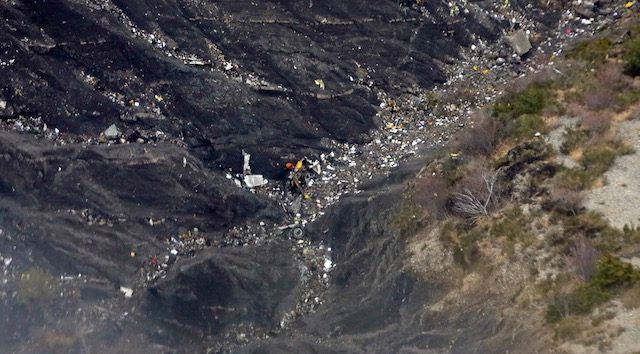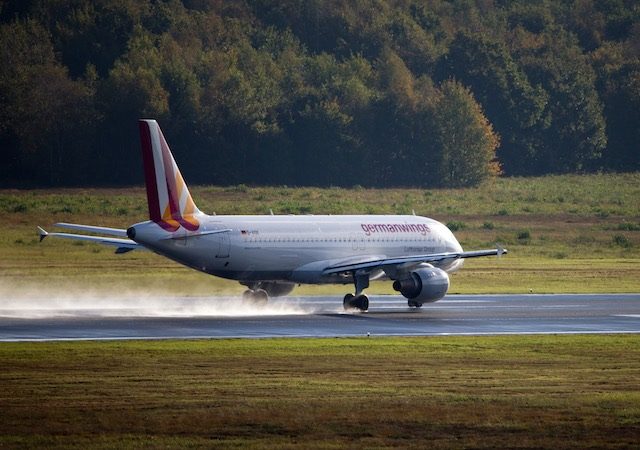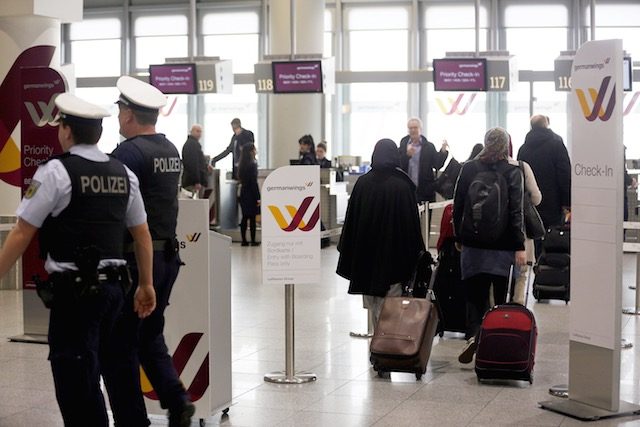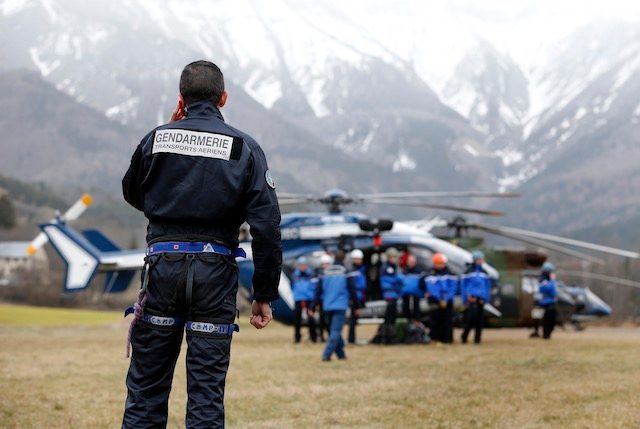SUMMARY
This is AI generated summarization, which may have errors. For context, always refer to the full article.

SEYNE-LES-ALPES, France (7th UPDATE) – A plane operated by the budget carrier of Germany’s Lufthansa crashed in a remote area of the French Alps Tuesday, March 24, killing all 150 on board in the worst aviation disaster on French soil in decades.
The accident’s cause remains a mystery but authorities have recovered a black box from the Airbus A320 at the crash site, where rescue efforts were hampered by the mountainous terrain.
Victims included 16 German teenagers and their two teachers on a school trip, and the mayor of their hometown called it “the darkest day in the history of our city”.
Opera singers Oleg Bryjak, 54, and Maria Radner, 33, were also on board, flying to their home city of Düsseldorf after starring in Richard Wagner’s opera “Siegfried” at Barcelona’s opera house.

French civil aviation authorities said they lost contact with the aircraft at 10:30 am local time (0930 GMT).
The plane descended for 8 minutes with no radio communication from its cockpit before hitting the side of a mountain. There was no response to desperate attempts by air traffic controllers to hail the pilots. (TIMELINE: The crash of Germanwings Flight 4U 9525)
Video images from a government helicopter showed a desolate snow-flecked moonscape, with steep ravines covered in scree. Debris was strewn across the mountainside, pieces of twisted metal smashed into tiny bits.
Local MP Christophe Castaner, who flew over the site, said on Twitter: “Horrendous images in this mountain scenery. Nothing is left but debris and bodies.
“A horror – the plane is totally destroyed.”
German Foreign Minister Frank-Walter Steinmeier, who also made a pass over the crash site, described a “horrific sight”.
“We are all united in great sorrow,” said the minister.
At airports in Barcelona and Düsseldorf, the departure and destination, some relatives let out wails of grief as they struggled to come to terms with the loss. (READ: Germanwings 4U9525: Tearful crash victims’ relatives gather at airports)
Working on assumption of ‘accident’

Budget airline Germanwings said the Airbus plunged for eight minutes but the crew made no distress call before crashing near the ski resort of Barcelonnette, according to French officials.
One of the plane’s black boxes has been found, but it was unclear whether it was the flight data recorder or the cockpit voice recorder.
Weather did not appear to be a factor in the crash, with conditions “calm” at the time.
“There was no cloud at the plane’s cruising altitude”, winds were “light to moderate” and there was no turbulence that could have contributed to the crash, French weather officials said.
Prime Minister Manuel Valls confirmed in parliament that no one had survived the disaster and Lufthansa said it was working on the assumption the crash was an “accident”.
“Anything else would be speculation,” Lufthansa vice president Heike Birlenbach told reporters at Barcelona’s El Prat airport.
She said the 24-year-old Airbus A320 had undergone its last routine check on Monday, March 23.
Germanwings executive Thomas Winkelmann said the pilot had “more than 10 years of experience” and some 6,000 flying hours on an Airbus jet under his belt.
It was the first fatal accident in the history of Germanwings, and the deadliest on the French mainland since 1974 when a Turkish Airlines plane crashed, killing 346 people.
‘Ground access is horrible’

A crisis cell has been set up in the area between Barcelonnette and Digne-les-Bains along with an emergency flight control centre to coordinate chopper flights to the crash site.
Authorities commandeered a large meadow with dozens of helicopters taking off. Several days will be needed to recover the scattered remains of those killed, a police spokesman said.
Valls said one helicopter had been able to touch down at the site of the accident but locals described the difficult terrain that awaited rescue teams.
“Ground access is horrible … it’s a very high mountainous area, very steep and it’s terrible to get there except from the air during winter,” local resident Francoise Pie said.
Another local official, Gilbert Sauvan, told Agence France-Presse: “The only possible access was by helicopter and people had to be winched down because the choppers couldn’t land.”
A separate mountain rescue team left on foot but they would take three hours to reach the site, he added.
Expressing their shock, French President Francois Hollande, his German counterpart Angela Merkel and Spanish Prime Minister Mariano Rajoy said they would all go to the crash site on Wednesday, March 25.
The 144 passengers were mainly German and Spanish, and included two babies.
Germanwings said 67 Germans were believed to have been on board while Spain said 45 people with Spanish-sounding names were on the flight.
Two Colombians and two Australians were also confirmed to be among the dead, while Hollande said Turks may also have been aboard.
Belgium and Denmark said at least one of their nationals was on board, while Britain said its nationals were likely among the victims.
Japan also said it was checking whether two of the passengers were Japanese.
A Swedish third division football team booked on the fatal flight had changed flights at the last minute. “May they rest in peace,” Dalkurd FF goalkeeper Frank Pettersson wrote on Twitter.
The world’s worst air disasters remain the March 27, 1977, collision of two Boeing 747s on the runway at Tenerife in the Canary Islands, killing 583 people, and the August 12, 1985 crash into a mountainside of a Boeing 747 belonging to Japan Airlines, killing 520 people. – Daniel Ortelli and Marc Burleigh, AFP / Rappler.com
Add a comment
How does this make you feel?
There are no comments yet. Add your comment to start the conversation.